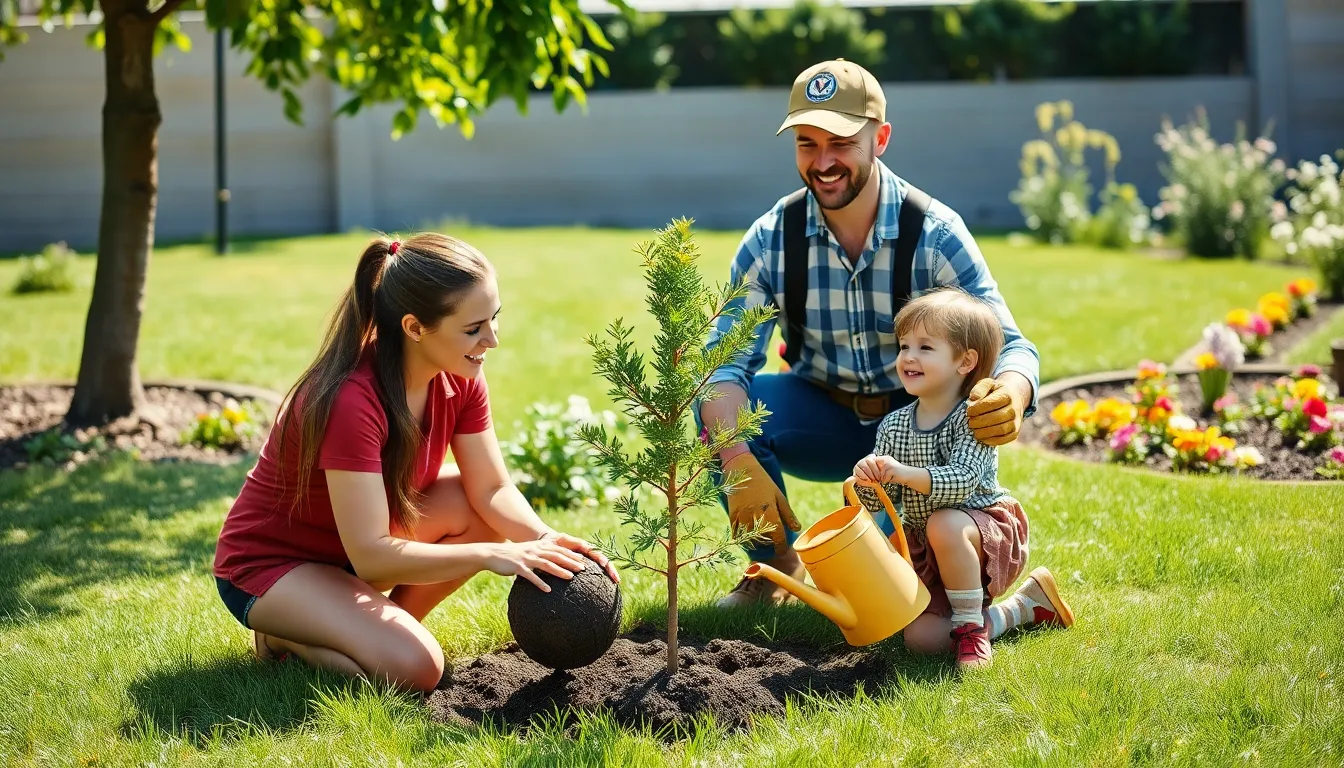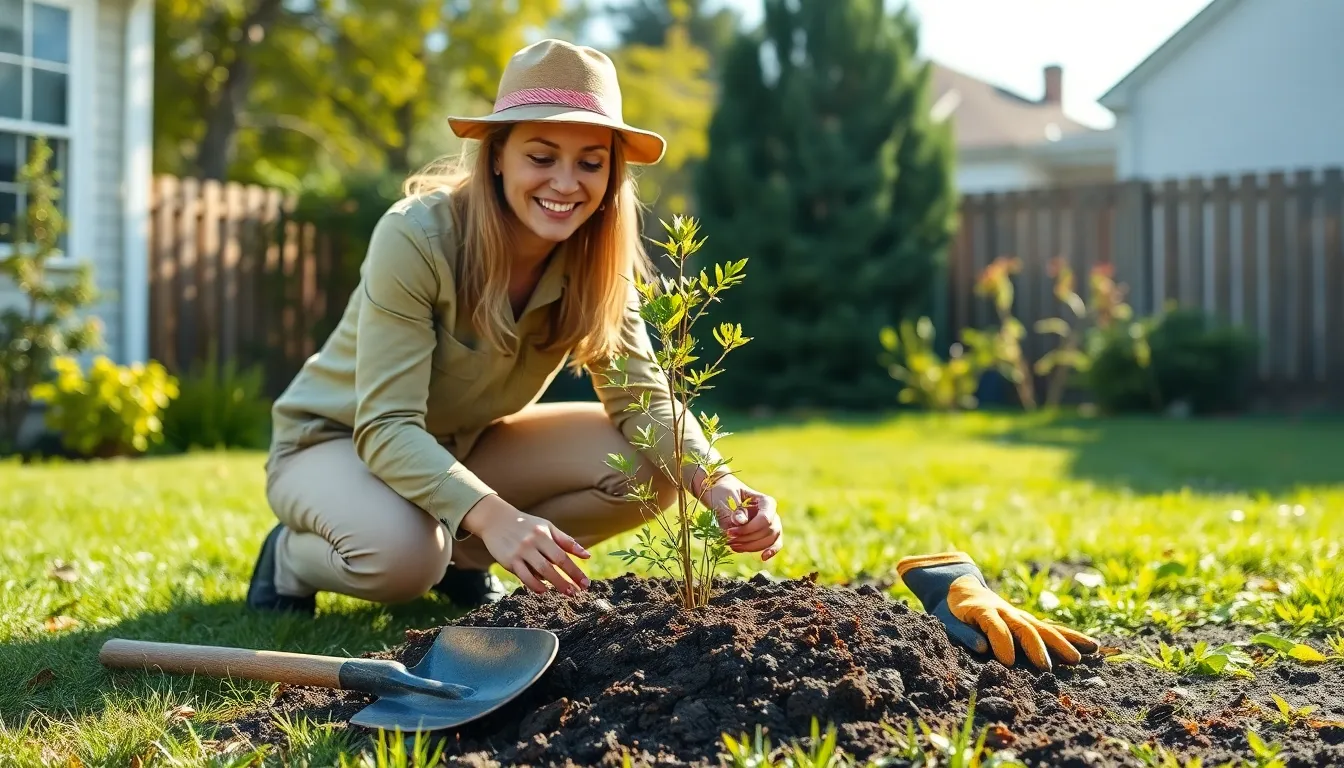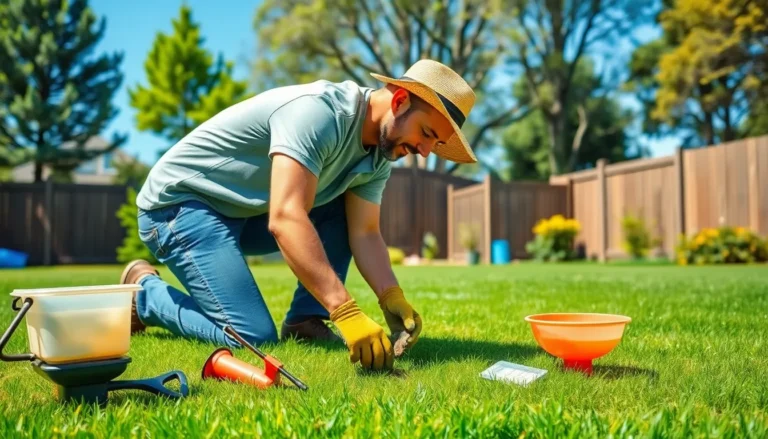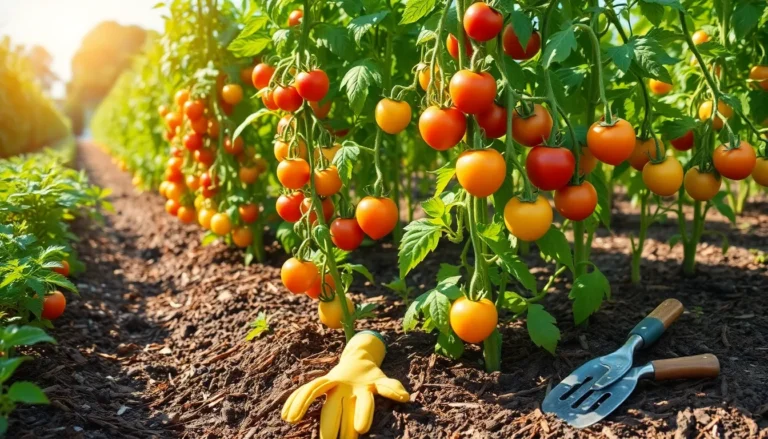Tree Planting Tips: Unlock a Thriving Garden and Boost Your Backyard’s Beauty

Planting a tree might seem as simple as digging a hole and tossing in a seedling, but there’s an art to it that can make even the most seasoned gardener scratch their head. With the right tips, anyone can transform their backyard into a lush oasis while simultaneously playing superhero for the planet. Who wouldn’t want to be the proud parent of a majestic oak or a vibrant cherry blossom?
Tree Planting Tips
Tree planting plays a crucial role in maintaining ecological balance. Healthy trees improve air quality by absorbing carbon dioxide and releasing oxygen, vital for human and animal life. Urban areas particularly benefit from trees, which help reduce heat and moderate temperature.
Planting trees supports biodiversity by providing habitats for various species, including birds, insects, and small mammals. Diverse ecosystems thrive with the presence of trees, contributing to the health of the environment. Communities also experience enhanced beauty and aesthetics due to well-placed trees.
Economic advantages stem from tree planting as well. Properties with landscaping including trees often see increased value. Business districts with trees attract more customers, leading to higher sales. Trees also lessen energy costs by providing shade during hot months, lowering the need for air conditioning.
Soil health improves with the presence of trees too. Tree roots anchor soil, preventing erosion and promoting water infiltration. Nutrient cycles benefit from decomposing leaves, enhancing soil fertility.
Additionally, mental health often improves with greenery around. Studies show that access to green spaces reduces stress and enhances overall well-being. Communities with more trees tend to foster social interaction, bringing people together.
Tree planting offers multifaceted benefits that extend beyond individual gardens. Incorporating trees contributes positively to personal spaces, community environments, and global ecosystems. The act of planting trees supports a sustainable future while fostering connection to nature.
Preparing For Tree Planting

Effective preparation sets the stage for successful tree planting. Several key steps ensure a healthy start for new trees.
Choosing The Right Tree Species
Selecting the right tree species is crucial. Consider factors such as climate, soil type, and available space. Native species often thrive better than non-natives. They require less maintenance and support local wildlife. For instance, oaks and maples suit various environments and provide significant ecological benefits. Researching specific tree varieties helps determine which ones thrive in a given area. Additionally, think about the desired aesthetics and growth habits. Some trees offer shade, while others showcase beautiful flowers.
Selecting The Ideal Location
Finding the ideal location for planting is vital. Evaluate sun exposure, wind patterns, and soil drainage. Trees often prefer full sun, so areas with limited shade work best. Examine soil quality too; it should be rich and well-drained. Avoid placing trees too close to structures or other plants. This prevents competition for resources. Consider future growth; a tree that matures to 50 feet won’t thrive beneath power lines. Mapping out potential sites aids in making informed decisions and maximizing each tree’s growth potential.
Tree Planting Techniques
Effective tree planting requires knowing specific techniques that ensure successful growth. The foundation starts with techniques like digging the right hole and considering proper spacing.
Digging The Right Hole
Digging the hole involves more than just creating a cavity. The hole should be two to three times wider than the root ball and just as deep. This width promotes root expansion and allows trees to establish effectively. Remove any grass or weeds surrounding the area, as they compete for nutrients. Aerating the bottom of the hole facilitates drainage and root growth. Additionally, place the tree in the center of the hole, ensuring that the top of the root ball is slightly above ground level. This approach prevents issues like rot and encourages healthy growth.
Proper Spacing Considerations
Spacing trees correctly requires consideration of their mature size and location. Typically, large trees need at least 20 to 30 feet apart, while smaller varieties can be closer, around 10 to 15 feet. Proper spacing ensures that each tree receives adequate sunlight, water, and nutrients. It also reduces competition for resources and promotes airflow, reducing disease risk. Assess surrounding plants and structures to optimize placement, allowing for future growth without obstruction. Planning spacing carefully leads to a more aesthetically pleasing and healthier landscape.
Caring For Newly Planted Trees
Caring for newly planted trees is crucial for ensuring their healthy growth and longevity. Following specific practices can lead to thriving trees in your landscape.
Watering Best Practices
Watering newly planted trees requires careful attention. Apply water deeply and less frequently to encourage deep root growth. Aim for about 10 to 15 gallons per week, adjusting based on rainfall and temperature conditions. Use a soaker hose or drip irrigation for consistent moisture without waterlogging the roots. Check the soil moisture by digging a few inches down—if it’s dry, it’s time to water. Consider the type of tree, as different species have varying water needs. During the first growing season, monitor the trees regularly to ensure they receive adequate hydration.
Mulching And Fertilizing Tips
Mulching around the base of newly planted trees helps retain moisture and suppress weeds. Use organic mulch, such as wood chips or bark, applying a 2 to 4-inch layer while keeping it away from the trunk to prevent rot. Fertilizing should be done with caution. Wait until the trees establish themselves, typically after one growing season. When fertilizing, use a slow-release or organic option, following package instructions. This approach provides essential nutrients without overwhelming the young trees. Monitoring soil quality can also guide decisions on fertilization and help improve overall health.
Common Mistakes To Avoid
Neglecting proper hole dimensions often leads to poor root development. Ensure the hole is two to three times wider than the root ball and equal in depth. Overlooking the impact of grass and weeds around the planting site can stifle tree growth. Always remove any competing plants before planting to give new trees the best chance.
Ignoring the importance of tree spacing may lead to problems as trees mature. Large trees require at least 20 to 30 feet between them, while smaller variations need around 10 to 15 feet for adequate growth. Planting too closely increases the risk of disease and limits resources.
Failing to provide sufficient watering can stunt tree growth significantly. It’s crucial to water deeply and infrequently rather than offering shallow, regular moisture. Utilizing soaker hoses or drip irrigation systems supports consistent soil moisture.
Misjudging soil condition can impede successful planting. Conduct soil tests to understand pH and nutrient levels before the planting process. Applying fertilizer too early can harm young trees. Focus on organic mulching first to retain moisture and suppress weeds before considering any additional fertilizer.
Overlooking the importance of mulching can also have negative effects. Organic mulch helps regulate soil temperature and moisture while preventing weed competition. It’s advisable to apply a mulch layer around the base of the tree, maintaining a distance from the trunk to avoid rot.
Failing to monitor newly planted trees for pests can invite trouble. Regular inspections help identify issues early, ensuring timely intervention. Neglecting these simple yet critical steps often leads to the decline of tree health and vigor.
Conclusion
Tree planting is a rewarding endeavor that goes beyond beautifying a space. By implementing the right techniques and care practices, anyone can contribute to a healthier environment and enhance their landscape. The benefits of planting trees extend from improved air quality to increased property value, making it a worthwhile investment.
As individuals take the time to nurture their trees, they not only foster a connection to nature but also support local ecosystems. Embracing the art of tree planting is a step toward sustainability and a brighter future for generations to come. With careful planning and dedication, each tree planted can make a significant impact.



